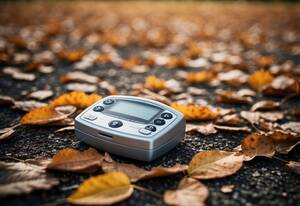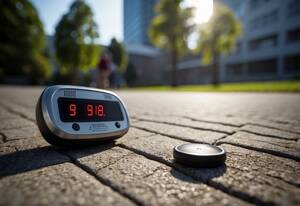
11 Jun Why It’s Important to Have Fall Detection for Your Medical Alert Systems: Enhancing Safety and Quick Response
Falls are one of the leading causes of injury among older adults, making the availability of fall detection in medical alert systems essential. Having a medical alert system with fall detection can provide peace of mind, knowing that help will be on the way even if you can’t push a button. This feature can be particularly critical in emergencies where immediate assistance can significantly affect outcomes. This article takes you through the reasons why having a fall detection system is an essential add-on to your medical alert system.
 Fall Detection Technology
Fall Detection Technology
Fall detection technology relies on advanced sensors and algorithms to ensure timely assistance when a fall occurs. This technology is built into various wearable devices, offering accuracy and reliability in monitoring movements and detecting falls.
How Fall Detection Works
Fall detection systems typically use accelerometers and gyroscopes embedded within the device to monitor movement patterns. When a fall is detected, the device triggers an alert, contacting emergency services or a designated caregiver automatically. These systems measure changes in speed and orientation to identify sudden impacts. They provide a vital safety net for individuals who might not be able to manually signal for help following a fall.
Advancements in Sensors and Algorithms
Recent advancements have significantly improved the sensitivity and accuracy of fall detection. Modern devices use sophisticated algorithms that better differentiate between a genuine fall and other activities, such as bending over or sitting down abruptly. The integration of machine learning allows these systems to continuously learn and adapt to individual user behaviors, enhancing their reliability over time. Enhanced sensor technology, including multi-axis accelerometers, plays a crucial role in these improvements.
The Role of Wearable Devices
Wearable devices such as pendants, wristbands, and smartwatches are central to fall detection technology. These devices are designed for continuous wear, ensuring constant monitoring. Smartwatches often include additional features such as heart rate monitoring and GPS tracking, while pendants and wristbands focus on simplicity and ease of use. Wearable devices must be comfortable and water-resistant to ensure they are effective in all situations, including in the shower where falls are common.
Comparing Medical Alert Systems
When comparing medical alert systems, consider the type of device, the reliability of fall detection, and the response time. Pendants are discreet and easy to use, while smartwatches offer more functionality. Systems like the Medical Guardian MGMini and Bay Alarm Medical are known for their robust fall detection capabilities and quick emergency response. Comparing the costs, subscription fees, and customer reviews can also help determine which system best fits your needs.
The Impact of Fall Detection on Seniors and Caregivers
 Fall detection systems offer significant benefits by enhancing the safety and security of seniors, providing peace of mind to caregivers, reducing response times in emergencies, and mitigating the risks associated with falls. Below is a detailed examination of these effects.
Fall detection systems offer significant benefits by enhancing the safety and security of seniors, providing peace of mind to caregivers, reducing response times in emergencies, and mitigating the risks associated with falls. Below is a detailed examination of these effects.
Enhancing Safety and Security for Older Adults
Fall detection systems are crucial for maintaining the safety of older adults. By utilizing advanced sensors and algorithms, these systems can detect a fall in real-time.
With immediate alerts, emergency services can be dispatched quickly, reducing the time an individual remains unattended after a fall. This increases the likelihood of a positive outcome and lowers the risk of complications such as injuries and long-term hospital stays.
The presence of a fall detection system can significantly boost the sense of security for seniors living alone, ensuring they receive prompt assistance when necessary.
Providing Peace of Mind to Caregivers
Fall detection systems also play a critical role in providing peace of mind to caregivers. Knowing that an older adult is being continuously monitored for falls can alleviate the constant worry about their well-being.
These systems can notify caregivers immediately if an incident occurs, allowing them to respond or arrange help without delay. This is particularly vital for family members who may not be nearby or are juggling multiple responsibilities.
This reassurance can improve the caregiver’s quality of life, reducing stress and allowing them to focus on other aspects of care or personal endeavors.
Reducing Response Times in Emergency Situations
Timely response to falls is essential for preventing more serious outcomes. Fall detection systems can drastically reduce the response time by sending immediate alerts to emergency services.
Upon detecting a fall, the system can notify predefined contacts or connect directly with emergency services. This swift action ensures that medical help reaches the affected individual as quickly as possible.
Fast response times can be the difference between a minor injury and a severe one, making these systems a critical component of a comprehensive care plan for older adults.
Mitigating the Risks Associated with Falls
Falls are a leading cause of injury among older adults, often resulting in broken bones or head injuries. Fall detection systems help mitigate these risks by ensuring that falls are promptly identified and attended to.
Prompt medical intervention can prevent complications that arise from prolonged immobility, such as pressure sores or dehydration. Further, the data collected from fall detection systems can be analyzed to understand and reduce the factors contributing to falls.
By addressing these risks proactively, such systems contribute to healthier aging and a better quality of life for seniors.
Considerations for Choosing a Medical Alert System
When selecting a medical alert system, it’s crucial to evaluate the system features, assess costs, and consider the reliability of the service provider. Your choice can significantly impact the effectiveness and convenience of the system.
Assessing System Features and Capabilities
Ensure the system offers fall detection. This feature can automatically detect falls and alert emergency personnel, which is crucial for seniors or individuals at risk.
Look for technology that integrates with other devices, such as smartphones or smartwatches. This can provide flexibility and convenience.
Consider battery life as this ensures the device is reliable during power outages or when it’s needed most.
Evaluate the quality and responsiveness of the monitoring center. A reputable company should provide 24/7 monitoring with quick response times.
Evaluating Cost Versus Value
Assess the monthly fees and any additional costs for equipment and activation. These can vary widely among different companies.
Compare the cost versus value. For example, some systems offer added features like GPS tracking and caregiver alerts, which might justify a higher price.
Look for warranty plans that protect your investment. Some companies offer extended warranties or free replacements, which can be beneficial in the long run.
Investigate if a free trial period is available. This gives you an opportunity to test the system without a long-term commitment.
Understanding the Importance of a Reliable Service Provider
Choose a service provider known for reliability. Research customer reviews and ratings to gauge their reputation.
Confirm that the provider has a dedicated monitoring center with trained professionals. Response times should be quick, and false alarms should be minimized.
Check for technology updates and maintenance services to ensure the system remains effective over time.
Verify the providers offer robust customer support and clear channels for troubleshooting and assistance. This ensures you have help when you need it most.
Conclusion
Ensuring the safety and well-being of older adults is crucial. Fall detection in medical alert systems plays a significant role in achieving this goal.
These systems use sensors and algorithms to detect falls and alert caregivers or emergency services. This prompt response can reduce the severity of injuries and provide peace of mind.
Using fall detection technology can enhance independence while reducing the fear of falling. This can significantly improve the quality of life.
Incorporating fall detection into your medical alert system is an effective step toward ensuring a safer environment for those at risk. Consider the benefits and make an informed decision.
The information on MedicalResearch.com is provided for educational purposes only, and is in no way intended to diagnose, cure, or treat any medical or other condition.
Some links may be sponsored. Products are not endorsed.
Always seek the advice of your physician or other qualified health and ask your doctor any questions you may have regarding a medical condition. In addition to all other limitations and disclaimers in this agreement, service provider and its third party providers disclaim any liability or loss in connection with the content provided on this website.
Last Updated on June 11, 2024 by Marie Benz MD FAAD
